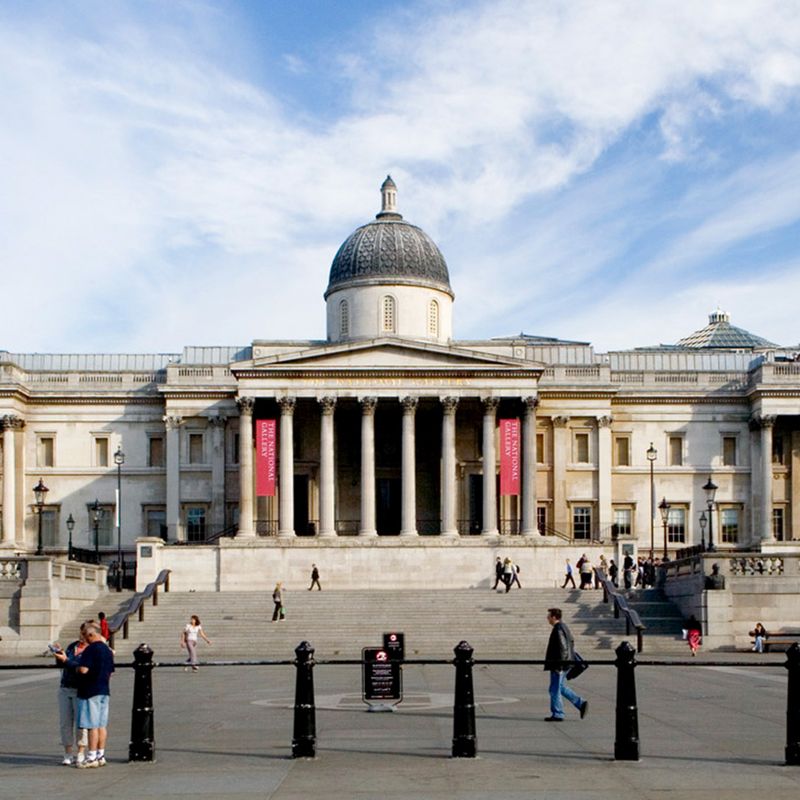
The Leaning Tree Trunk
From around the late 1850s or early 1860s Corot worked on a series of studio landscapes based on one of the lakes at Ville-d'Avray, near Paris, where he would often stay in his parents' former house. This view is particularly closely related to a painting of around the same period in the National Gallery of Victoria, Melbourne, The Bent Tree (L'Arbre Penché). The foreground trees, including the single upright trunk at the right and that reaching out across the picture, are based on a drawing of 1826 he had made during his first visit to Italy in 1825-8, Clump of Trees at Civita Castellana (National Gallery of Art, Washington). In many of his related views the foreground trees follow the drawing closely, but here, one of the later variants, they have become stylised and decorative, pared down to formal elements within the composition.
In tonality and paint handling this work represents a change of style in Corot's work around this time. Colour became less important and he would work the picture surface with innumerable small touches of paint to create a shimmering effect. The foliage on the branches to the left of the main clump of trees is painted in such a manner, with small strokes of grey mingling with the paint of the sky. Both the man leaning over in his boat and the woman reaching up into the tree to gather twigs are very common motifs in Corot's work, the woman famously appearing in Souvenir of Mortefontaine (about 1864, Louvre, Paris). She is also seen in the earlier Peasants under the Trees at Dawn. The interior of the boat is painted with streaks of bright orange, and the same colour is used in the cap of the standing woman. It is a cadmium orange or yellow, a pigment which came into use in the 1840s, and one much used by Corot to add bright accents of colour to the predominant grey-green tonality of his landscapes.
Credit: Salting Bequest, 1910
c. 1860-5
Oil on canvas
49.7 x 60.7 cm
NG2625
Image and text © The National Gallery, London, 2025
Where you'll find this

National Gallery
Permanent collection





